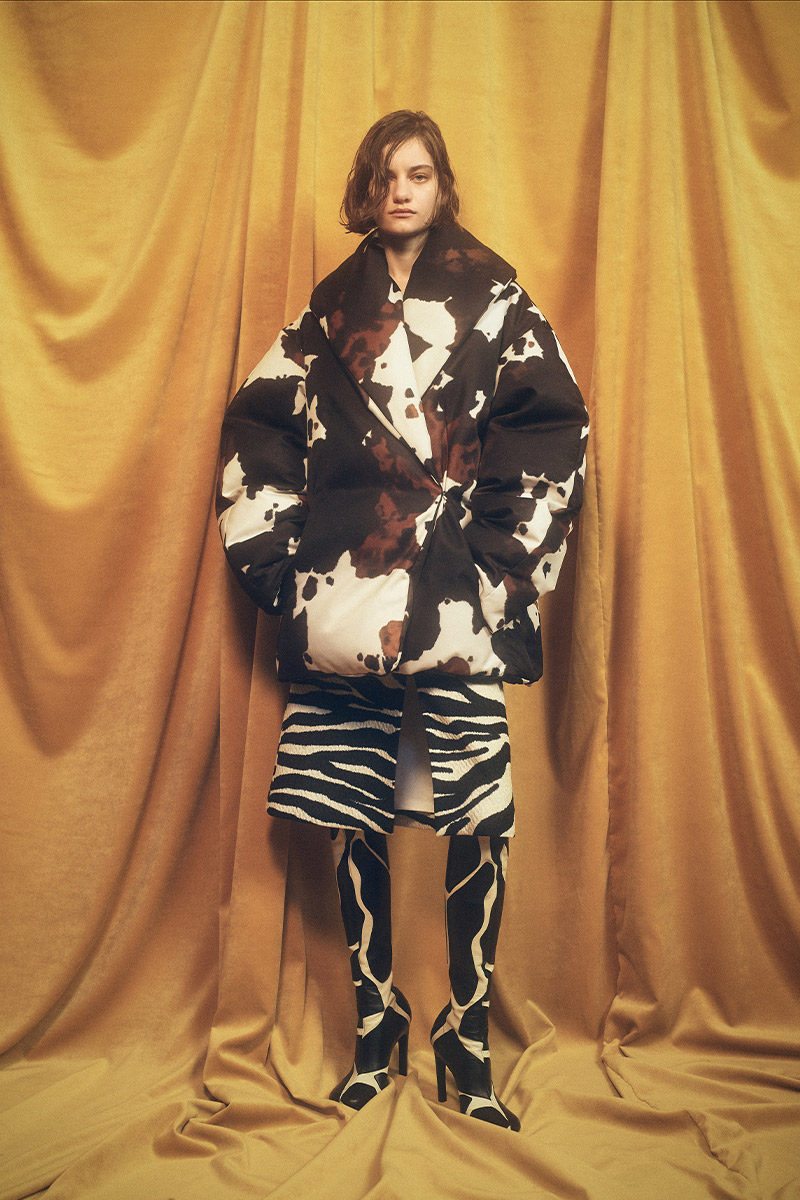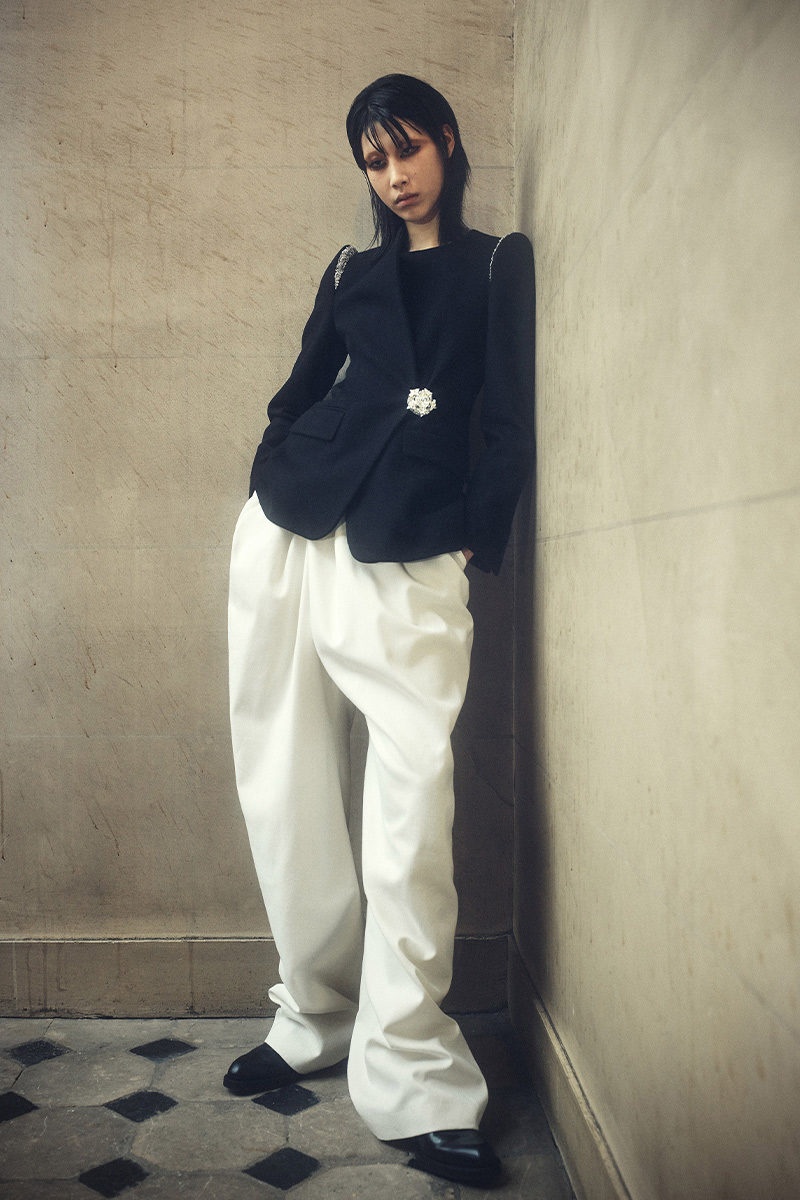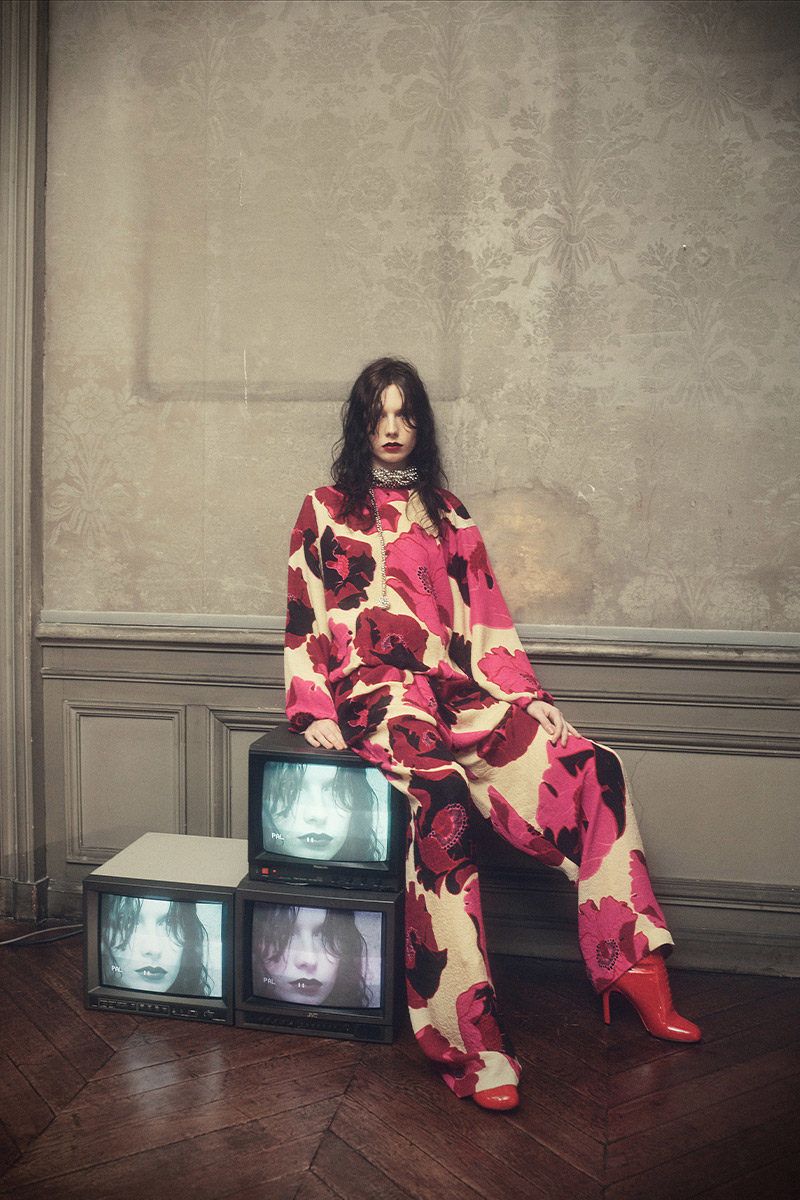Dries Van Noten was hosting a houseful of decadent ’70s Parisian squatters. At least that’s the feeling that began to creep over you as you climbed the stairs and walked across the creaking parquet floors of the dilapidated Hotel de Guise. In this mansion belonging to an old French family, the clock apparently stopped 50 years ago.
Instead of live people, there were mannequins grouped in paneled rooms as if in conversation, leaning watching over bannisters, discovered in a bathroom, glimpsed in a closet, standing on tables or suddenly, disconcertingly, seated on the attic stairs.
In other words: this was Dries Van Noten in his element, curating an interior environment instead of a fashion show. It was the perfect setting for absorbing the novel shock of suddenly being able to see and touch the richly layered textures of his collection again—and to sense a distinct frisson of darkness and perversity in the air.
Or was it his perfume—the whiff of Cannabis Patchouli, with a note of Raving Rose from the room which exhibited his new line of fragrances? A scent and lipstick launch which were part of Van Noten’s ‘experiential’ comeback, and felt like a tangible resurgence of the sensuality that was denied during the pandemic.
Perhaps that’s also why Van Noten’s clothes looked so sumptuous: the animal print coat layered over deep crimson silk-velvet trousers, the way he threw together glam holographic sequins with denim trousers and a wildly nubbly wool scarf. How ’40s dresses dripped with lines of stones, and entire wunderkammers of collaged jewellery were suspended from leather-chokered necks.
Had he found himself designing more intensely, more richly, during the closed-in times? “No.” Van Noten replied, flatly. “It is always like this. You just never see it when it’s up on a runway.” He’s been one of the increasingly few hold-outs against convening physical shows this season— and one of the few who really adapted to exercising the creative possibilities of fashion filmmaking. Using the half-way house of this expressive presentation was something else, fully playing into his multiple talents as a curator of exhibitions, antique interiors aficionado, gardener (which connects with the perfumes) and being the Belgian guy with the Antwerpian memories of alternative parties in the ’70s and raves in the ’90s.
He makes a very good point: “I think it’s that whole tactile moment. It’s not that I don’t want to go back to fashion shows, because I think it’s another thing, but this is really nice to experience. This way of presenting creates closeness; the fact that you can explain things, touch things, see things. You can stage it so that you can tell more stories than in a fashion show. So for me, it was a very interesting way of thinking.”
So, to the “story.” Van Noten had been researching the work of Carlo Mollino, the Italian architect and photographer whose life spanned surrealism and the ’70s. “After he died, erotic Polaroids he had taken of women, nude and semi-dressed, were found in his apartment.” Look them up, and you find how Van Noten had come up with the early-’70 maxi-coat shapes, the leather chokers, the ‘kinky’ lace-up boots.
He also put his finger on another popular ’70s cult object—a down-padded jacket with a deep tubular edge (the original version of which is now in the V&A collection, identified as being by Charles James, thanks to my colleague Hamish Bowles.) Puffy volumes gone glamorous, circle shapes and other extreme geometries are part of the avant-garde news from Paris. Somehow, while staying within his own world, speaking to his own customers and bringing his whole character to creating his beauty/lifestyle lines, Dries Van Noten still has ways of clocking what’s happening outside.

1 / 10

2 / 10

3 / 10

4 / 10

5 / 10

6 / 10

7 / 10

8 / 10

9 / 10






